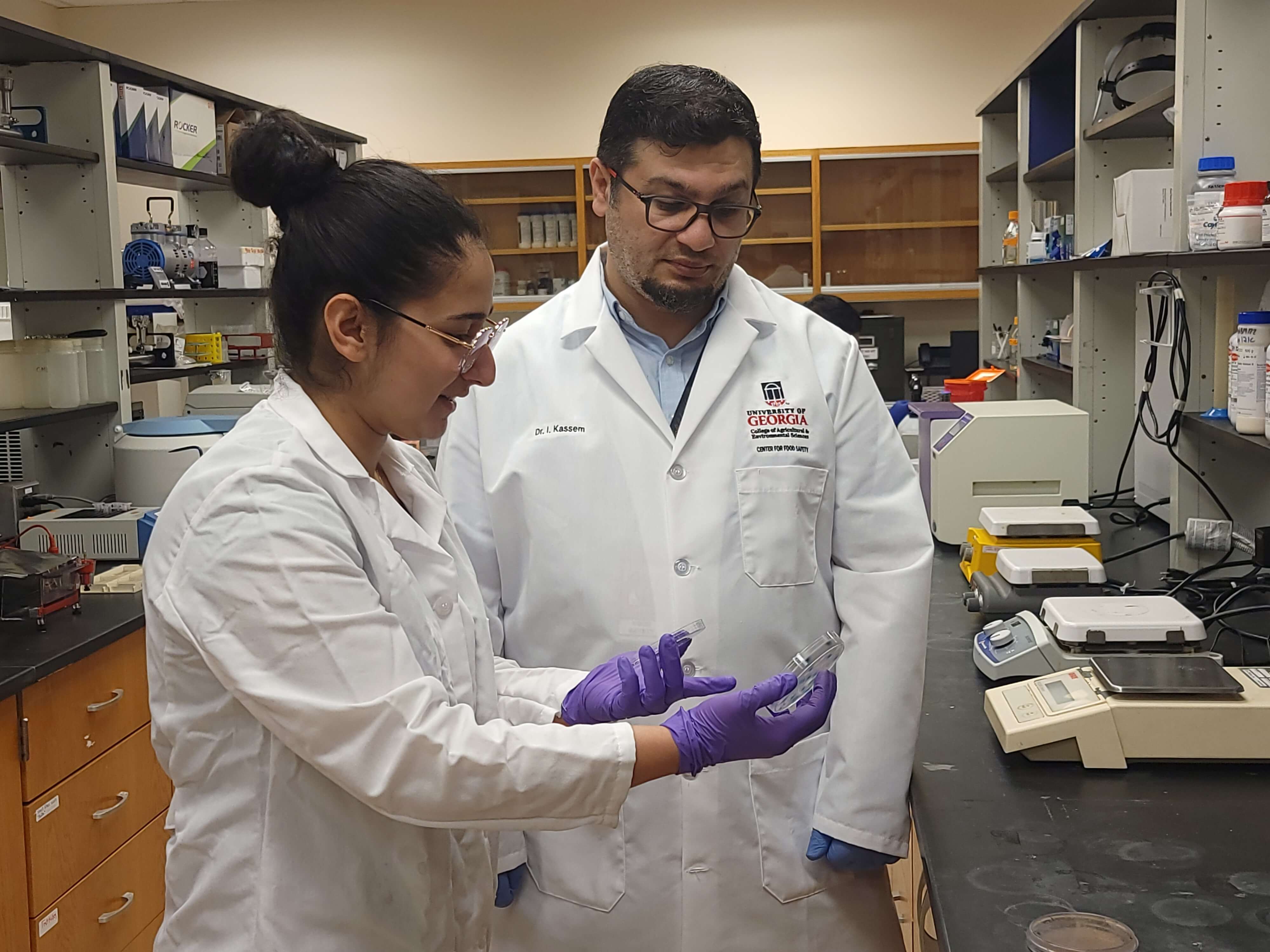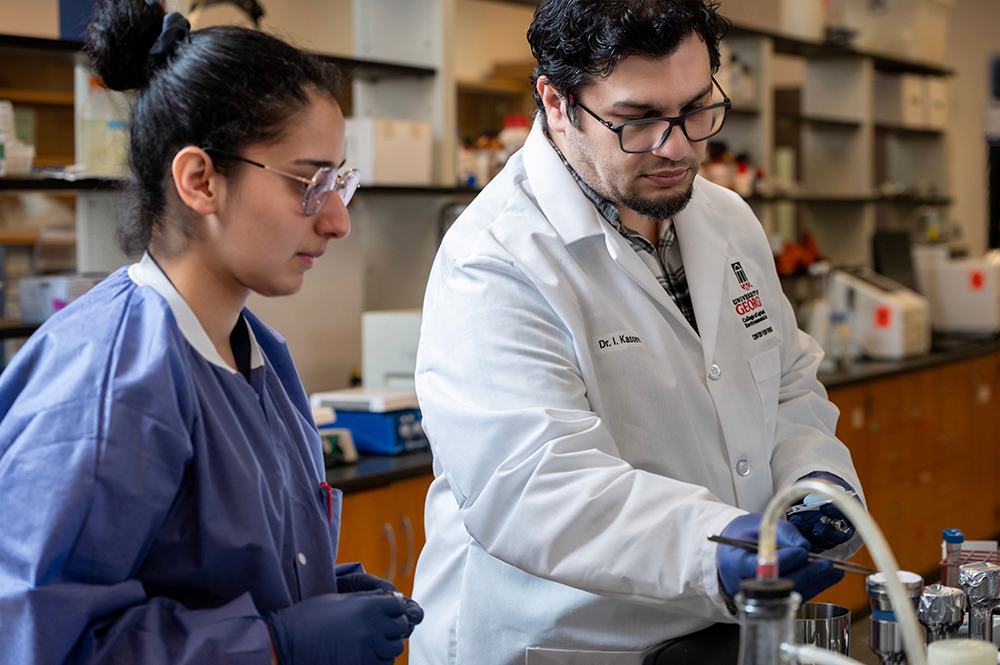
University of Georgia researchers in the College of Agricultural and Environmental Sciences are part of a $3.5 million grant designed to assist organic producers in meeting both National Organic Program standards and food safety requirements.
Abhinav Mishra, an associate professor and graduate program coordinator in the Department of Food Science and Technology, and Govindaraj Dev Kumar, an assistant professor with the UGA Center for Food Safety, are the UGA co-principal investigators for the project in collaboration with researchers from the University of Rhode Island, University of California, Davis and the Organic Center.
Determining food safety risks
The team will work together over the next four years to “reduce the operational and administrative barriers to compliance with multiple regulations for organic growers,” Mishra said.
“We submitted a planning grant in 2021 that allowed us to conduct a needs assessment to find the deficiencies in terms of policies for organic agriculture,” he said. “We determined that fresh produce was the primary focus area that we need to work on. We were able to find out what the requirements are for the industry and identify areas where we can work more intensely on developing strategies for producers.”
Mishra and Dev Kumar will be responsible for conducting surveys of soil amendments, such as poultry litter, used by organic producers across the Southeast. Then the researchers will perform lab experiments to determine the risk of contamination in organic crops by different environmental pathogens.
“We will use these risk assessment models to identify which environmental and farm practice factors contribute to the food safety risk of fresh, organic food,” said Mishra, adding that environmental factors can include climate and weather, wildlife, and contamination from external sources off-farm.
Creating practical tools for organic growers

The main emphasis of the grant work is Extension-based, with the goal of developing a user-friendly risk-assessment and decision-making tool for organic soil amendments. The researchers will develop, demonstrate and evaluate a suite of UGA Cooperative Extension outreach materials aimed at bringing all organic produce stakeholders — including organic growers, farm advisors, organic and food safety auditors and certifiers, and buyers — to a common understanding of the unique food safety risks and farm management strategies specific to organic agriculture of fruit and vegetable crops.
“If there is an organic producer whose operation is near a cattle operation, we want to determine, for instance, if those cattle operations are producing animal feces that might be transported to the leafy greens fields with runoff or wind,” Mishra said. “There are also internal farm practices such as soil amendment and irrigation that can impact food safety.”
Identifying risk factors in Georgia
For example, bacteria or pathogens in a sprinkler irrigation system can transfer to the plant, or if a producer uses sprinkler irrigation and there are any bacteria or pathogens on the soil, the sprinkler irrigation can create a splash from the soil and transfer to the plant. If that bacteria does not die before harvest, that can create significant food safety outbreaks, Mishra said.
“First, we will try to determine the major risk factors that affect the probability of getting any pathogens on leafy greens and other fresh produce. We also plan to develop system models that will consider different internal and external factors that influence those pathogens,” Mishra explained. “We plan to identify the pathway these pathogens follow throughout agricultural operations. We are looking at the entire crop duration, from planting to harvest, to see how the pathogens can travel from those external factors into the farms and the probability that pathogens will be present on the final harvested crops.”
In Georgia, study crops will likely include onions, blueberries and peaches and will be based on Extension and outreach efforts as a part of the study. UGA researchers will reach out to Georgia Organics to identify organic producers to participate in the study.
“Our first objective is performing a needs assessment to find out what practices organic producers follow and determine their needs. That will inform the research and the subsequent Extension and outreach to share information with our stakeholders,” Mishra said.
To learn more about ongoing research in the food science and technology department at UGA, visit foodscience.caes.uga.edu. Learn about the UGA Center for Food Safety at cfs.caes.uga.edu.






